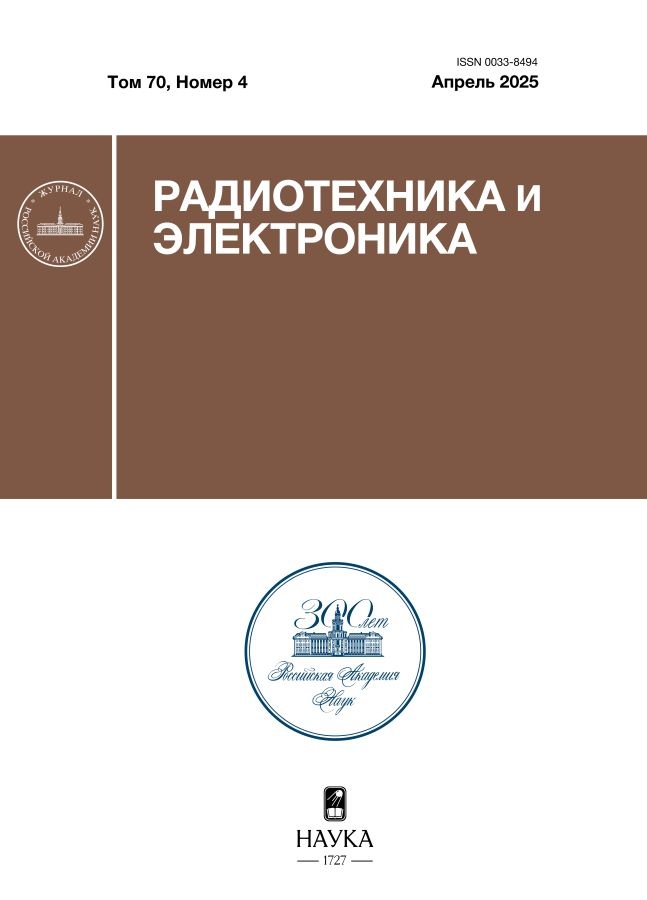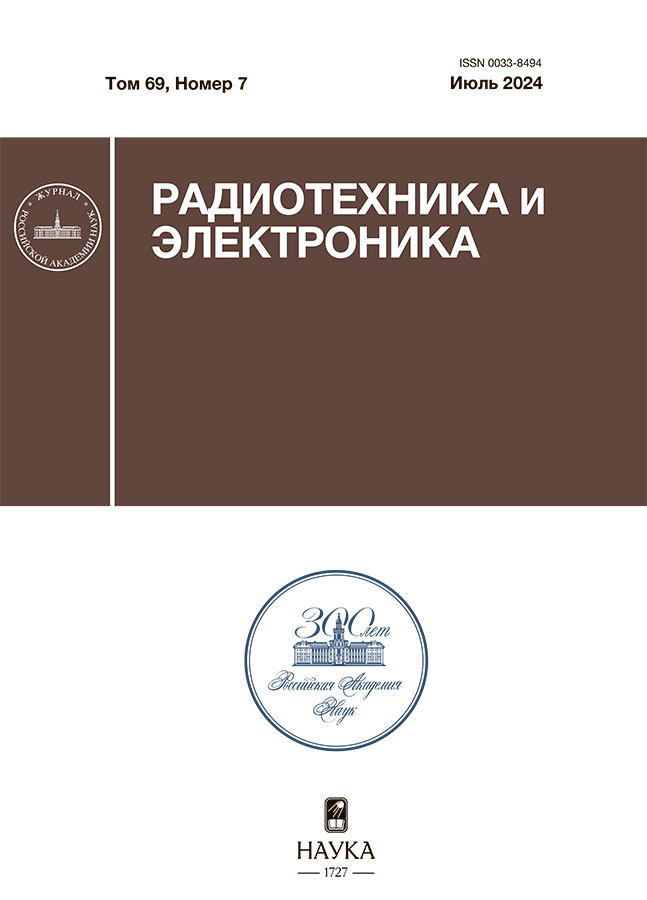Применение модели высокочастотного импеданса структур металл–трехслойный изолирующий промежуток–кремний к характеристикам реальных объектов
- Авторы: Белорусов Д.А.1, Гольдман Е.И.1, Чучева Г.В.1
-
Учреждения:
- Институт радиотехники и электроники им. В.А. Котельникова РАН
- Выпуск: Том 69, № 7 (2024)
- Страницы: 664-668
- Раздел: НАНОЭЛЕКТРОНИКА
- URL: https://permmedjournal.ru/0033-8494/article/view/681463
- DOI: https://doi.org/10.31857/S0033849424070084
- EDN: https://elibrary.ru/HYVABJ
- ID: 681463
Цитировать
Полный текст
Аннотация
На базе феноменологической модели высокочастотного импеданса проанализированы форма полевых характеристик и значения емкостей и проводимостей, измеренных в опытах на структуре металл–диэлектрик–полупроводник с трехслойным изолирующим слоем из двух разных сегнетоэлектриков и окисла кремния. Показано, что типичная для структур с изолятором из сегнетоэлектриков или диэлектриков форма графиков характеристик импеданса с двумя плато в области отрицательных и положительных полевых напряжений не свидетельствует о диэлектрическом качестве изолирующего промежутка. Отмечено, что наличие двух плато на экспериментальных графиках высокочастотных вольт-фарадной характеристики и полевой зависимости проводимости данных структур не является доказательством реализации режимов глубокого обеднения и сильного обогащения в полупроводнике. Указано, что аномально большие, по сравнению с вычисленной на основе геометрической емкости изолирующего слоя, значения измеряемых составляющих импеданса могут быть связаны с высокой, близкой к металлической, проводимостью пленки окисла.
Полный текст
Об авторах
Д. А. Белорусов
Институт радиотехники и электроники им. В.А. Котельникова РАН
Email: gvc@ms.ire.rssi.ru
Фрязинский филиал
Россия, пл. Введенского, 1, Фрязино Московской обл., 141190Е. И. Гольдман
Институт радиотехники и электроники им. В.А. Котельникова РАН
Email: gvc@ms.ire.rssi.ru
Фрязинский филиал
Россия, пл. Введенского, 1, Фрязино Московской обл., 141190Г. В. Чучева
Институт радиотехники и электроники им. В.А. Котельникова РАН
Автор, ответственный за переписку.
Email: gvc@ms.ire.rssi.ru
Фрязинский филиал
Россия, пл. Введенского, 1, Фрязино Московской обл., 141190Список литературы
- Воротилов К.А., Мухортов В.М., Сигов А.С. Интегрированные сегнетоэлектрические устройства / Под ред. А.С. Сигова. М.: Энергоатомиздат, 2011.
- Liu Y., Yang B., Lan Sh. et al.// Appl. Phys. Lett. 2022. V. 120. № 15. P. 150501. doi.org/10.1063/5.0090739
- Park J. Y., Yang K., Lee D. et al.// J. Appl. Phys. 2020. V. 128. № 24. P. 240904. doi.org/10.1063/5.0035542
- Wang B., Huang W., Chi L. et al.// Chem. Rev. 2018. V. 118. № 11. P. 5690. doi.org/10.1021/acs.chemrev.8b00045
- Belorusov D.A., Goldman E.I., Chucheva G.V. // Ceramics Int. 2021. V. 47. № 15. P. 21248. doi.org/10.1016/j.ceramint.2021.04.129
- Белорусов Д.А., Гольдман Е.И., Чучева Г.В. // ФТТ. 2021. Т. 63. № 11. С. 1887. doi.org/10.21883/FTT.2021.11.51592.154
- Belorusov D.A., Goldman E.I., Chucheva G.V. // Ceramics Int. 2024. V. 50. № 6. P. 9678. doi.org/10.1016/j.ceramint.2023.12.286
- Черняев М.В., Горохов С.А., Патюков С.И., Резванов А.А. // Электрон. техника. Сер. 3. Микроэлектроника. 2022. № 3. С. 31. doi.org/10.7868/S2410993222030058
- Иванов М.С., Афанасьев М.С. // ФТТ. 2009. Т. 51. № 7. С. 1259.
- Киселев Д.А., Афанасьев М.С., Левашов С.А., Чучева Г.В. // ФТТ. 2015. Т. 57. № 6. С. 1134.
- Гольдман Е.И., Ждан А.Г., Чучева Г.В. // ПТЭ. 1997. № 6. С. 110.
- Sze S.M., Kwok K.Ng. Physics of Semiconductor Devices. 3rd ed. N.Y.: John Willey @ Sons, 2007.
- Nicollian E.H., Brews I.R. MOS (Metal Oxide Semiconductor) Physics and Technology. N.Y.: John Willey @ Sons, 1982.
Дополнительные файлы













